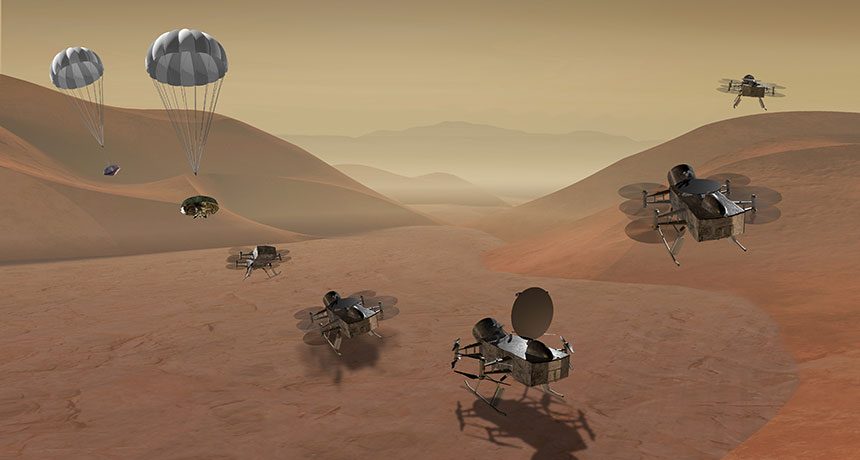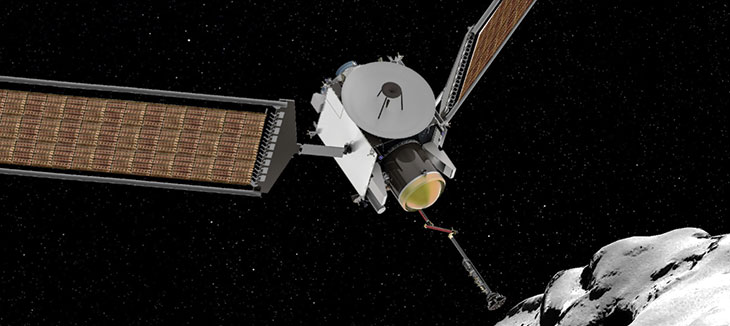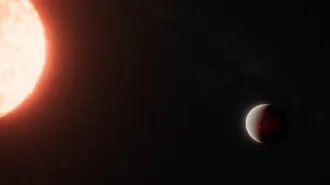NASA’s next stop will be Titan or a comet
Finalists for the agency’s next solar system mission take a deeper dive on previous projects

DRONE ON TITAN The Dragonfly mission, shown in this artist’s concept, would send a drone-like spacecraft to several sites on Saturn’s moon Titan to examine its chemistry.
NASA








